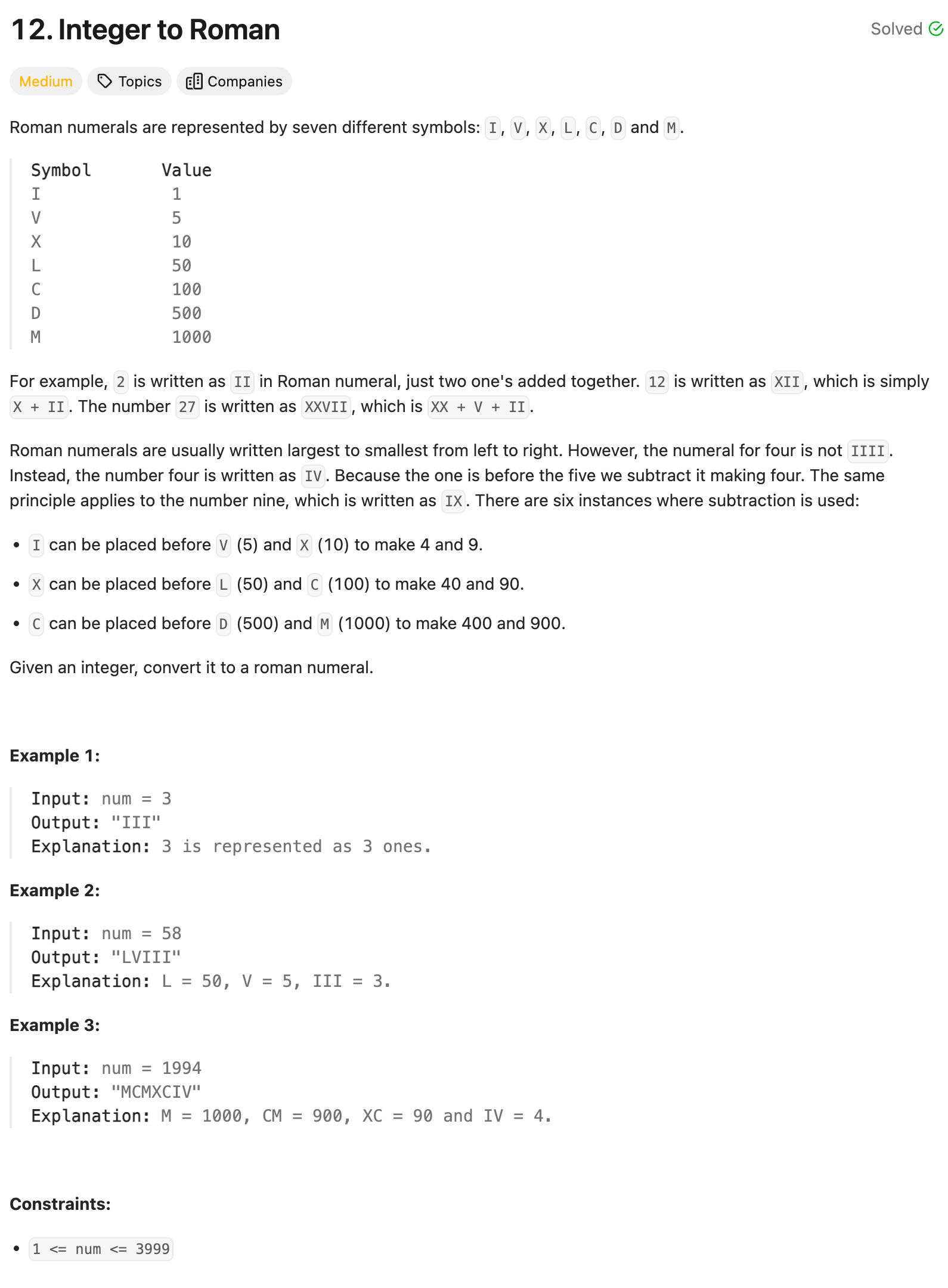Problem of The Day: Integer to Roman
Problem Statement
Intuition
My initial thoughts are to use a hash map to store the mapping between integers and their corresponding Roman numerals. Additionally, I need to consider special cases where subtraction is involved, such as IV for 4 or IX for 9.
Approach
I will create a hash map containing the integer values as keys and their Roman numeral counterparts as values. To handle special cases like 4, 9, 40, 90, etc., I will include those entries in the hash map. I will also keep a list of sorted keys for easy iteration.
I will then iterate through the sorted keys and subtract the largest possible value from the given number in each iteration while updating the result string with the corresponding Roman numeral. I will repeat this process until the number becomes zero.
Complexity
-
Time complexity: Since the input space (integers from 1 to 3999) is finite, the while loop will iterate a constant number of times, making the time complexity effectively O(1)
-
Space complexity: O(1) as the hash map and sorted values are fixed and do not scale with the input.
Code
class Solution:
def intToRoman(self, num: int) -> str:
hash_map = {
1: 'I',
5: 'V',
10: 'X',
50: 'L',
100: 'C',
500: 'D',
1000: 'M',
4: 'IV',
9: 'IX',
40: 'XL',
90: 'XC',
400: 'CD',
900: 'CM'
}
values = sorted(hash_map.keys())
res = []
while num > 0:
i = 0
k = values[0]
while i < len(values) and num >= values[i]:
k = values[i]
i += 1
num -= k
res.append(hash_map[k])
return ''.join(res)
